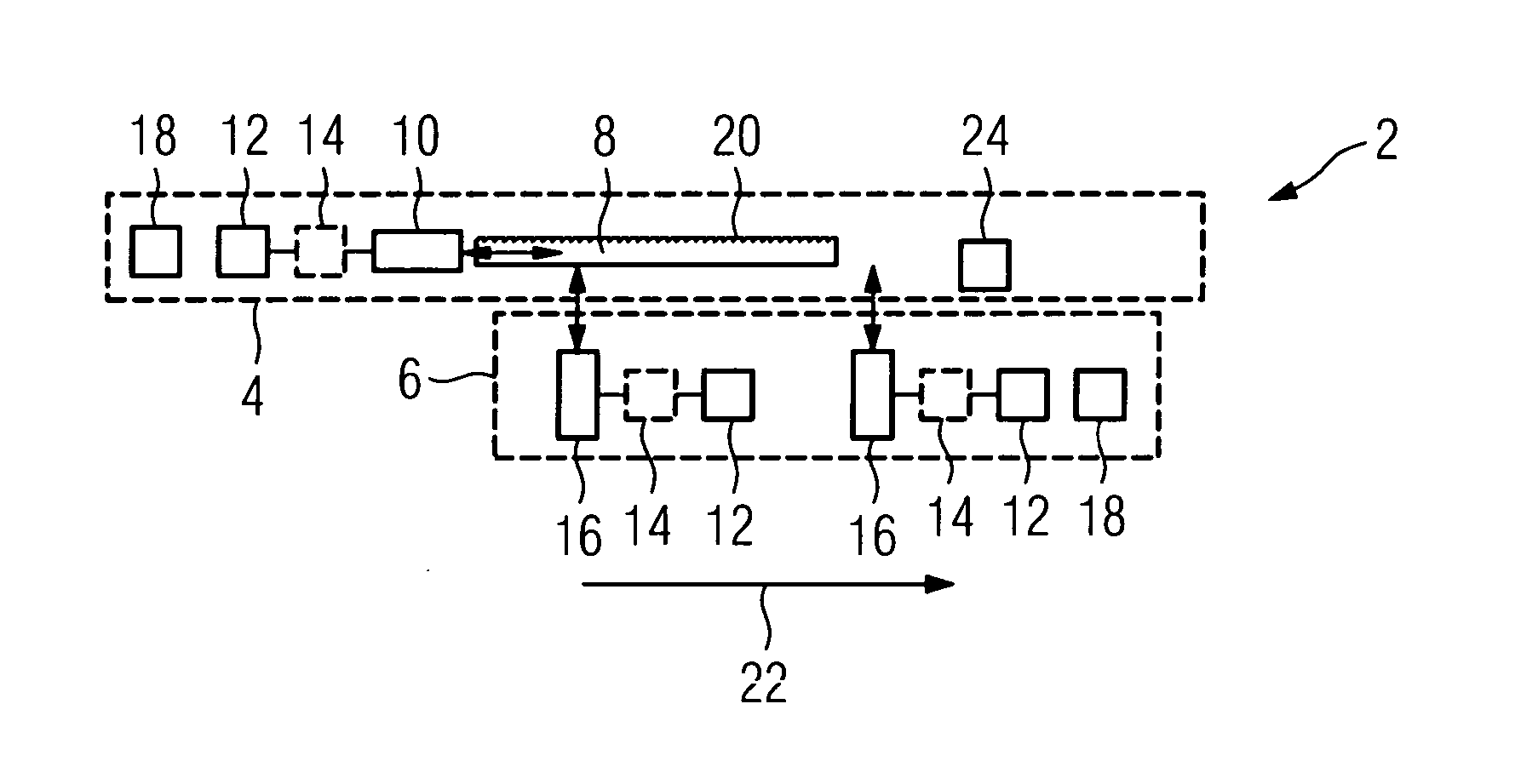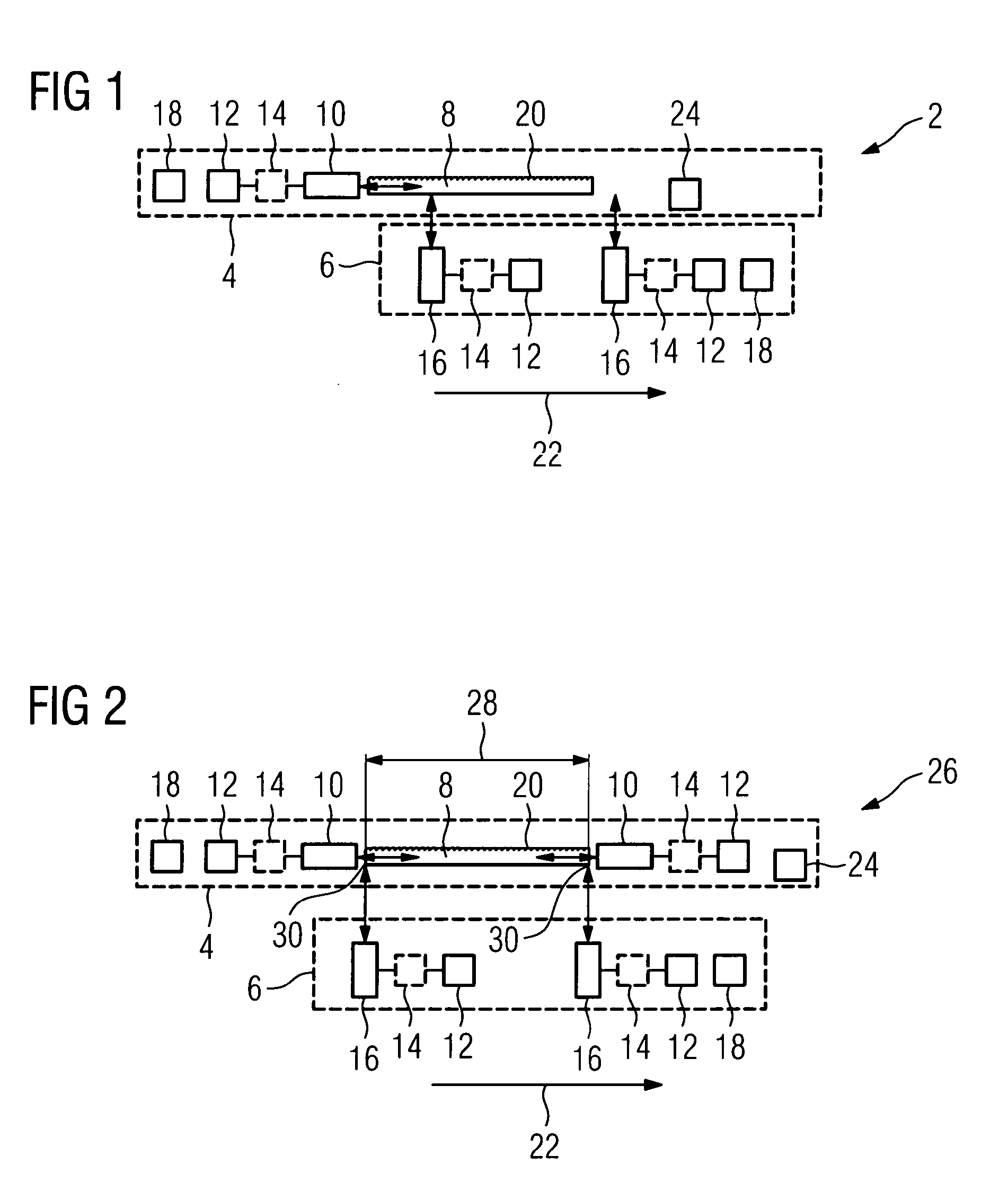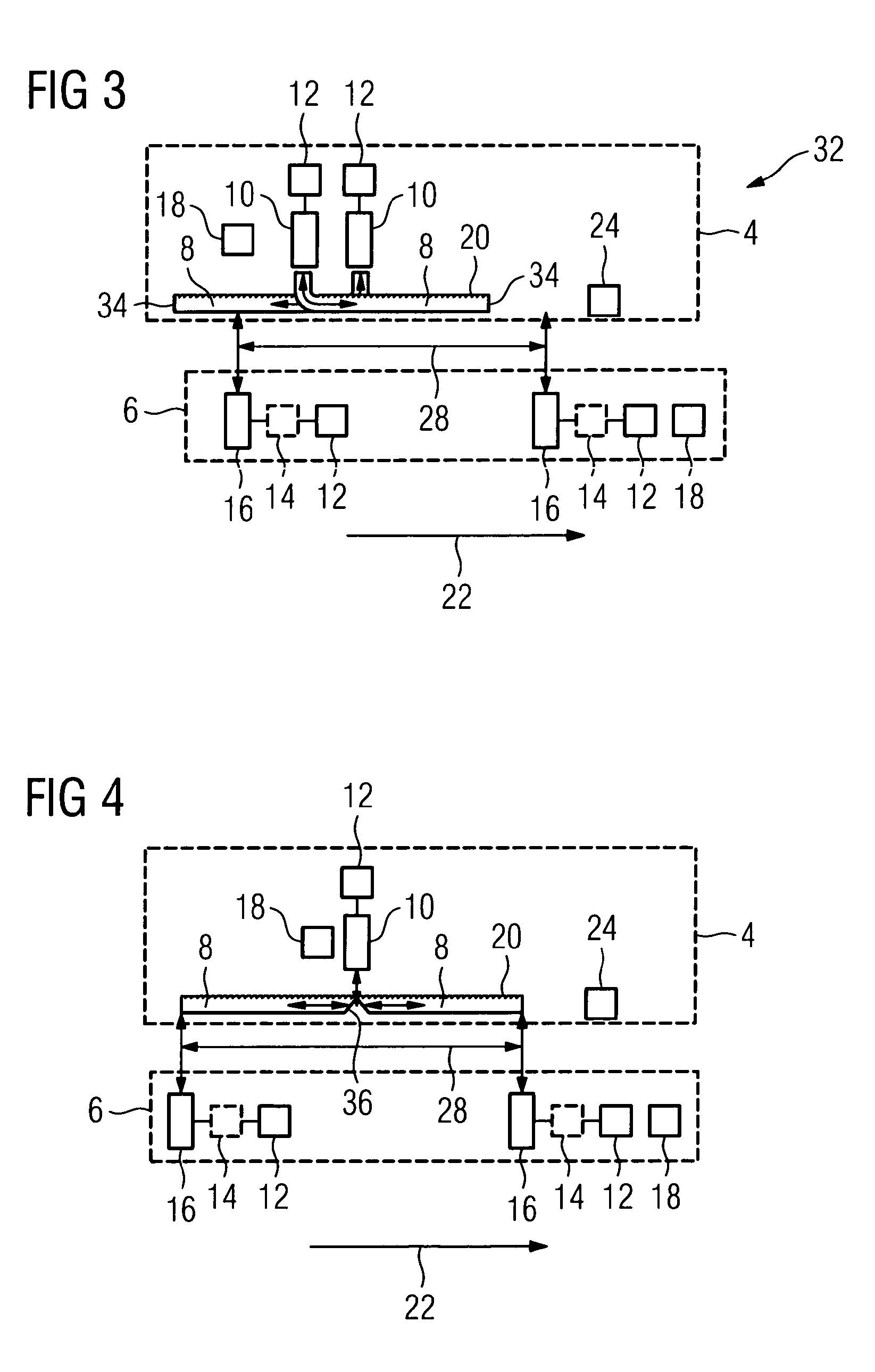Apparatus for transmitting data between two systems which move relative to one another
a technology of two systems and transmitting data, applied in the field of transmitting data between two systems, can solve the problem of widened light pulses, and achieve the effect of easy manufacturing and little disruption
- Summary
- Abstract
- Description
- Claims
- Application Information
AI Technical Summary
Benefits of technology
Problems solved by technology
Method used
Image
Examples
Embodiment Construction
[0054]FIG. 1 shows a schematic representation of one embodiment of an apparatus 2 on a first system 4 (e.g., a stationary system such as an earthbound system having a rail) and a second system 6 (e.g., a moving system such as a rail vehicle that is movable on a rail), moving relative to one another. The stationary system 4 includes an optical fiber 8. In one embodiment, the optical fiber 8 may be a singlemode fiber with a diameter of 10μ which guides light in one mode on account of a structural implementation (e.g., a small diameter). As a result, the fiber exhibits little mode dispersion and is suitable for transmitting data at a data rate of 109 bits / s. In addition, the optical fiber 8 is a polarization-retaining fiber, in which a polarization direction is maintained and, to that extent, a signal is not widened as a result of a widening of both polarization directions due to birefringence.
[0055]Arranged at one end of the optical fiber 8 is an axial module 10, which is provided for...
PUM
 Login to View More
Login to View More Abstract
Description
Claims
Application Information
 Login to View More
Login to View More - R&D
- Intellectual Property
- Life Sciences
- Materials
- Tech Scout
- Unparalleled Data Quality
- Higher Quality Content
- 60% Fewer Hallucinations
Browse by: Latest US Patents, China's latest patents, Technical Efficacy Thesaurus, Application Domain, Technology Topic, Popular Technical Reports.
© 2025 PatSnap. All rights reserved.Legal|Privacy policy|Modern Slavery Act Transparency Statement|Sitemap|About US| Contact US: help@patsnap.com



